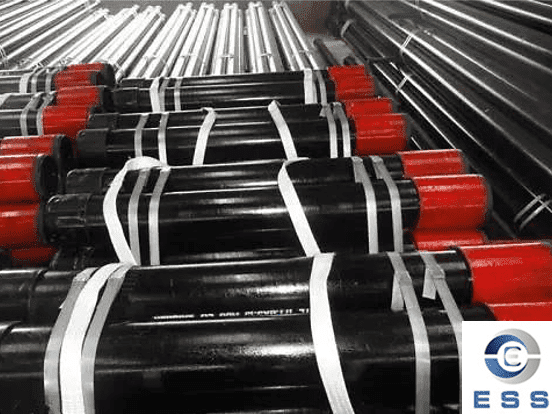
The material of the casing pipe pup joint has a crucial impact on its performance and service life. The material
selection of the casing pipe pup joint should be determined according to the
needs of the specific application scenario to ensure its excellent performance
during use and extend its service life.
When choosing the material of the casing
pipe pup joint, the following main factors need to be considered:
1. Corrosion resistance: The
casing pipe pup joint needs to be able to maintain its performance in various
environments and not be corroded. Common corrosion-resistant materials include
stainless steel (such as 304 and 316L stainless steel) and plastics (such as PVC,
PE, etc.).
2. High temperature resistance: If the
casing pipe pup joint needs to be used in a high temperature environment, a
material with good high temperature resistance should be selected. For example,
materials such as alkali-free glass fiber, silicone rubber and ceramic fiber
can remain stable at high temperatures.
3. Flame retardant performance: For
occasions where fire protection is required, it is very important to choose a
material with good flame retardant performance. Materials such as alkali-free
glass fiber, silicone rubber and ceramic fiber have good flame retardant
properties.
4. Insulation performance: If the
casing pipe pup joint is used in an electrical system, insulation performance
is key. PVC-U electrical conduit has good insulation performance and is
suitable for electrical systems.
5. Cost and budget: The
prices of different materials vary greatly, and it is necessary to choose the
right material according to the budget. For example, PVC material has a lower
cost, while stainless steel material has a higher cost.
Advantages and disadvantages of different materials:
1. PVC material: It has good insulation
performance and wear resistance, low cost, but poor high temperature
resistance.
2. PE material: It has good flexibility and
insulation, but its high temperature resistance is not as good as PVC.
3. Galvanized
steel pipe: It has good conductivity and durability, and is suitable for high
current environments, but the cost is high.
4. Stainless steel: It has
good corrosion resistance and strength, and is suitable for special
environments, but the cost is high.
5. Alkali-free glass fiber: It has
good high temperature resistance and flame retardant properties, but the cost
is high.
6. Silicone rubber: It has
high temperature resistance and good insulation, but the cost is high.
7. Ceramic fiber: Excellent fire resistance and heat insulation, but the cost is
high.
Application scenarios and specific
selection recommendations:
1.
Electrical system: Choose
PVC-U electrical conduit because it has good insulation performance and low
cost.
2. High
temperature environment: Choose alkali-free glass fiber, silicone rubber or ceramic fiber,
which can remain stable at high temperatures.
3. Corrosive environment: Choose
stainless steel or plastic materials to prevent corrosion.
4. Environment with high fire protection requirements: Choose alkali-free glass fiber, silicone rubber or ceramic fiber,
which have good flame retardant properties.
Summary
In summary, when choosing the material of the casing pipe short
section, it is necessary to determine it according to the specific use
environment and needs, and comprehensively consider factors such as corrosion
resistance, high temperature resistance, flame retardant performance,
insulation performance and cost to ensure the maximum benefit of the short
section performance.













 Eastern Steel Manufacturing Co.,Ltd not only improve product production and sales services, but also provide additional value-added services. As long as you need, we can complete your specific needs together.
Eastern Steel Manufacturing Co.,Ltd not only improve product production and sales services, but also provide additional value-added services. As long as you need, we can complete your specific needs together.










